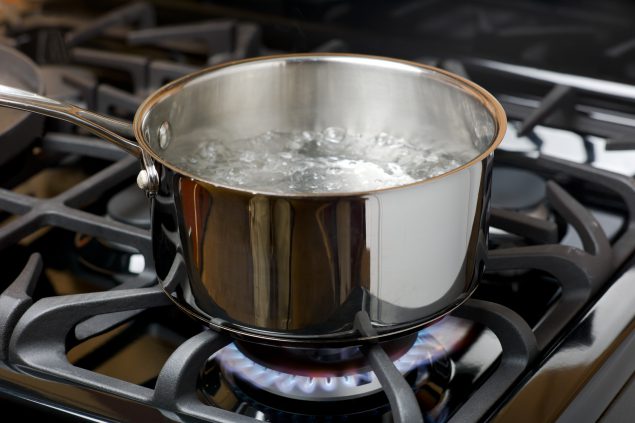Key points
- This information is intended to help prevent crypto infections in commercial, childcare and food service settings when a boil water advisory is issued.
- People in charge of these types of establishments can help keep the public safe by following these recommendations.

Prevention tips when a boil water advisory is issued
General Procedures
- Discontinue service of equipment with water line connections (for example, post-mix beverage machines, spray misters, auto-fill coffee/tea makers, instant hot water heaters, ice machines)
- Discard ice made prior to the boil water advisory issuance and discontinue making ice. Use commercially-manufactured ice.
Do not serve or consume:
- Water that has not been disinfected
- Ice or drinks made with water that has not been disinfected
- Raw foods rinsed with water that has not been disinfected
Drinking Water
For drinking water, use:
- Commercially-bottled water
- Water that has been disinfected for Cryptosporidium by:
- Boiling at a rolling boil for 1 minute (at altitudes greater than 6,562 feet (>2,000 m), boil water for 3 minutes)
- Distilling
- Boiling at a rolling boil for 1 minute (at altitudes greater than 6,562 feet (>2,000 m), boil water for 3 minutes)
- Water hauled from an approved public water supply in a covered sanitized container
- Water from a licensed drinking water hauler truck
Important tip
Although chemicals (such as bleach) are sometimes used for disinfecting small volumes of drinking water for household use, chemical disinfection is generally not recommended for commercial establishments because of the lack of onsite equipment for testing chemical residuals. Cryptosporidium is poorly inactivated by chlorine or iodine disinfection but can be removed from water by filtering through a reverse osmosis filter, an "absolute one micron" filter, or a filter certified to remove Cryptosporidium under NSF International Standard #53 or #58 for either "cyst removal" or "cyst reduction" (see About Choosing Home Water Filters for more information.) However, unlike boiling or distilling, filtering will not eliminate other potential disease-causing microorganisms, such as bacteria and viruses.
Cooking and Food Prep
- Discard any ready-to-eat food prepared with water prior to the discovery of the water contamination.
- Prepare/cook ready-to-eat food using the drinking water alternatives listed above or restrict the menu to items that do not require water.
For equipment/utensils/tableware in cooking and food preparation:
- Use single service/use articles or clean and sanitize equipment/utensils/tableware using the drinking water alternatives listed above. Follow the established procedures to wash, rinse, and sanitize.
- Cryptosporidium on equipment/utensils/tableware may be disinfected using dishwashing machines that have a dry cycle or a final rinse that exceeds 113°F for 20 minutes or 122°F for 5 minutes or 162°F for 1 minute.
- Discontinue operations when inventories of clean equipment/utensils/tableware are exhausted.
Handwashing
Important Tip
Cryptosporidium is not killed by alcohol gels and hand sanitizers. Soap and disinfected water are specifically recommended for preventing cryptosporidiosis.
To wash hands:
- Wet your hands with the drinking water alternatives listed above and apply soap.
- Lather your hands by rubbing them together with the soap. Be sure to lather the backs of your hands, between your fingers, and under your nails.
- Rinse your hands well under running water—if running water is not available, water may be poured on your hands by another person.
- Dry your hands using a clean towel or air dry them.
When the Boil Water Advisory is Over
- Make sure equipment with water line connections (for example, filters, post-mix beverage machines, spray misters, auto-fill coffee/tea makers, instant hot water heaters, ice machines, glass washers, dishwashers, etc.) is flushed, cleaned, and sanitized according to manufacturers' instructions.
- Change all point-of-entry and point-of-use water filters, including those associated with equipment that uses water.
- Managers of large buildings with water-holding reservoirs should consult their facility engineer and health department about draining the reservoir.
- Flush pipes and faucets. Run cold water faucets continuously for at least 5 minutes.
- Flush drinking fountains. Run water continuously for at least 5 minutes.
- Run water softeners through a regeneration cycle.
- Drain and refill hot water heaters set below 113°F.
Resources
Michigan State University. Emergency Action Plans for Retail Food Establishments pdf icon[PDF – 74 pages]
CDC. Drinking Water Advisory Communications Toolbox [PDF - 212 pages]
